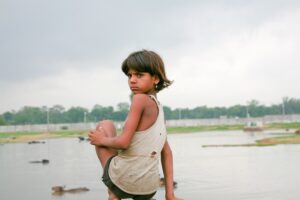Physical Address
23,24,25 & 26, 2nd Floor, Software Technology Park India, Opp: Garware Stadium,MIDC, Chikalthana, Aurangabad, Maharashtra – 431001 India
Physical Address
23,24,25 & 26, 2nd Floor, Software Technology Park India, Opp: Garware Stadium,MIDC, Chikalthana, Aurangabad, Maharashtra – 431001 India

At a time when the impacts of climate change seem to be more and more tangible in the form of extreme weather events, researchers have found that the effects of climate change are increasingly manifesting in unexpected ways.
India, for instance, may see a dip in the number of child marriages this year, due to extreme weather events connected to the El Nino. Such weather conditions have resulted in drought even earlier, and in drought years, the scarcity of dowry funds frequently serves as a discouraging factor for such unions.
A recent study led by Fiona C Doherty from Ohio State University, United States, revealed that extreme weather events, such as droughts and floods, contribute to an increase in child, early, and forced marriages (CEFM). This phenomenon is exacerbated by structural inequalities like gender disparity and poverty. Gender-based violence worsens in extreme weather conditions, impacting women and girls’ resilience.
The study reviewed 20 research papers published from 2010 to 2022, linking extreme weather events to CEFM in low- and middle-income countries, including Bangladesh, India, Pakistan, Kenya, Indonesia, Malawi, Nepal, Tanzania, Vietnam, and sub-Saharan Africa. CEFM often becomes a survival strategy for families facing economic vulnerabilities and food insecurity caused by disasters.
Fiona Doherty explains, “It’s not that extreme weather has a direct effect on child marriages. What these disasters do is exacerbate existing problems of gender inequality and poverty that lead families to child marriage as a coping mechanism.”
For instance, in Bangladesh, girls are married off early after disasters like Cyclone Aila to ease economic burdens. In Kenya, young brides are sought to assist with increased labour demands during crises.
The practice of bride price and dowry plays a crucial role, with local customs affecting the likelihood of CEFM during droughts and rainfall shocks. In sub-Saharan Africa and Vietnam, where the groom’s family pays a bride price, CEFM increases during droughts.
In India, the reliance on dowries in many Indian child marriages implies that during drought years, the scarcity of dowry funds often acts as a deterrent to such unions.
Parents sometimes resort to CEFM to protect their daughters from sexual violence, which tends to escalate during crises. Gender inequality is identified as the primary driver of child marriage, emphasizing the importance of education and financial autonomy for women and girls. Increased parental education correlates with reduced CEFM rates in India and Vietnam.
On the other hand, getting married before reaching adulthood exposes children to elevated risks of experiencing various forms of violence, with girls being disproportionately affected due to gender inequality and societal norms.
Alarming statistics reveal that 12 million girls are married before adulthood each year, posing a significant risk of this practice resurging. The study also links COVID-19 and poverty to child marriages in India.
Climate change-induced extreme weather events elevate the risk, as each 10 percent deviation in rainfall is linked to approximately a 1 percent rise in the incidence of child marriage. Climate change and environmental factors have worsened modern slavery in Africa, affecting millions in forced marriage and labour. Ensuring uninterrupted education and proper nutrition for adolescent girls can help break this cycle.
The percentage of young women who entered into childhood marriages has decreased from 21 percent to 19 percent since the previous estimates were published five years ago.
Nevertheless, despite this positive change, global efforts to reduce child marriage must accelerate significantly, aiming for a pace 20 times faster to achieve the Sustainable Development Goal of ending child marriage by 2030.
References:
Image: https://www.pexels.com/photo/a-girl-in-tank-top-sitting-near-a-lake-while-looking-afar-13819209/